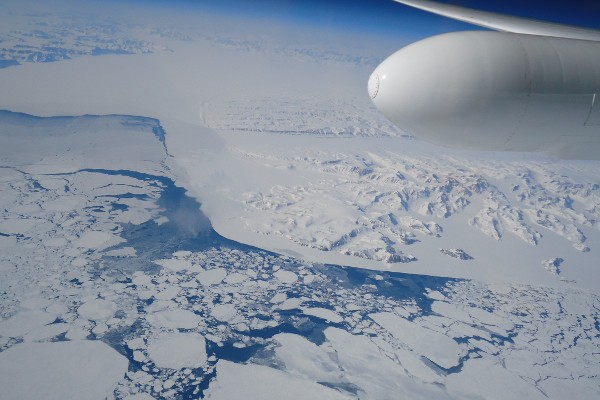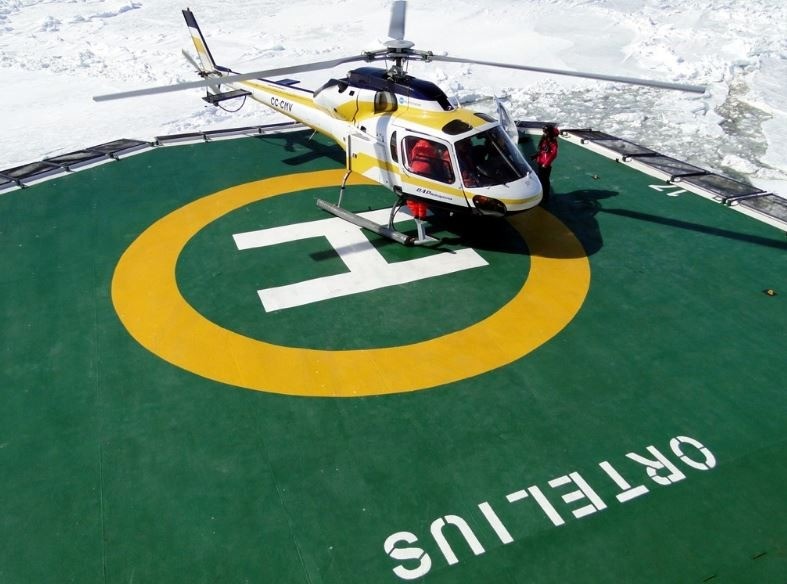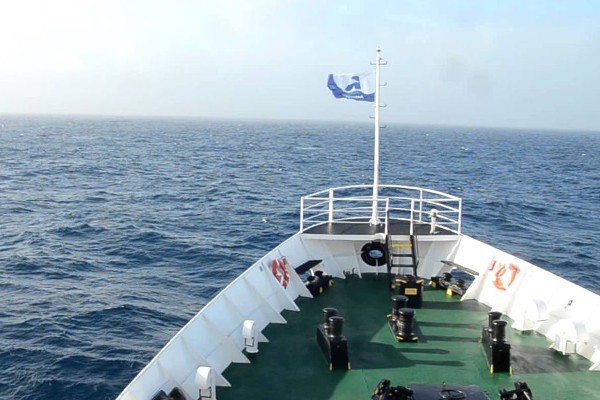Antarctica, the Earth’s last frontier, beckons with its untouched landscapes and unique wildlife. While traditional cruises to the Antarctic Peninsula are popular, they only scratch the surface of this vast continent. To truly witness the immense interior of Antarctica, flying is essential. Forget airports, the continent relies on makeshift landing strips, opened on request, making air travel a unique adventure in itself. If venturing to the South Pole for skiing or conquering Vinson Massif, Antarctica’s highest peak, is on your bucket list, then flying is your only route.
There are primarily three distinct ways to experience Antarctica by plane: the quick ‘fly-over’, the immersive ‘fly-in’, and the time-saving ‘fly-cruise’. Each option presents a unique perspective and caters to different travel styles and budgets. Let’s explore each in detail to help you decide which aerial Antarctic adventure is right for you.
Antarctica Fly-Over: A Day Trip to the White Continent
 Aerial view of the vast, icy landscape of Antarctica from a plane window
Aerial view of the vast, icy landscape of Antarctica from a plane window
For those seeking a taste of Antarctica without the extensive time commitment or adventurous spirit required for longer trips, a fly-over is the perfect solution. This option involves a single-day chartered flight directly over Antarctica and back. Imagine witnessing the breathtaking expanse of the White Continent from the comfortable vantage point of your airplane seat – a truly unique day trip. This is an ideal choice for travelers who prefer comfort and speed, and may not have weeks to dedicate to an Antarctic expedition.
The convenience of a fly-over is undeniable. Completed in under a day, it sidesteps the need for lengthy itineraries, allowing you to experience Antarctica without disrupting a busy schedule. Typically lasting around 12 hours for a round trip, these flights transform a far-off dream into an accessible day excursion.
Fly-over experiences are enhanced by on-board Antarctica experts. These knowledgeable guides provide fascinating insights into the continent’s geography, geology, and wildlife through engaging talks during your flight, enriching your aerial journey as you enjoy provided meals and drinks.
However, it’s important to note that a fly-over is a visual experience from afar. While you’ll witness stunning panoramic views, you won’t have the opportunity to set foot on Antarctic soil, interact with the unique wildlife up close, or immerse yourself in the landscape in the same way as other travel options.
Currently, all Antarctica fly-over operations depart exclusively from Australia. Flights are available from major cities like Melbourne, Sydney, and occasionally Perth. These flights are not frequent, typically departing every one to two weeks during peak season, so early booking is crucial to secure your place. The cost for this extraordinary day trip ranges considerably based on your chosen seating class, from approximately US$900 to US$7,500 for the 12-hour round trip aboard a Boeing 747. For comprehensive details and booking information, visit www.antarcticaflights.com.au.
Antarctica Fly-In: Venturing into the Heart of the Continent
 Explorers camping amidst the vast white expanse of the Antarctic interior, highlighting the adventurous nature of fly-in trips
Explorers camping amidst the vast white expanse of the Antarctic interior, highlighting the adventurous nature of fly-in trips
For the truly adventurous traveler with a desire to explore the untouched interior of Antarctica, a fly-in expedition is the ultimate choice. Unlike fly-overs and fly-cruises that focus on the periphery, fly-in trips transport you to the vast, rarely seen heart of the continent. Commercial flights to Antarctica don’t exist, making private charter operators the only gateway to this pristine wilderness. This mode of travel is perfect for those seeking challenging activities like serious hiking, camping, skiing, or mountaineering in an unparalleled polar environment.
Fly-in experiences are exceptionally exclusive. Fewer than 500 individuals annually venture into Antarctica’s interior via this method, granting you access to a realm few on Earth have witnessed. A significant highlight of these expeditions is the remarkable opportunity to observe Emperor penguins in their natural habitat – a sight far less common on peninsula cruises. Some operators even offer the extraordinary option of multi-night camping amidst an Emperor penguin colony, providing an unforgettable wildlife encounter.
Flying into the interior also opens doors to achieving remarkable milestones, such as reaching the South Pole itself. This can be accomplished through guided trekking, skiing expeditions, or further travel by smaller aircraft from interior bases. Moreover, fly-in trips are an excellent alternative for travelers sensitive to seasickness, completely bypassing the potentially turbulent Drake Passage crossing.
Departure points for fly-in expeditions vary depending on your destination within Antarctica. Options include Argentina, Chile, Australia, and South Africa. Antarctic Logistics Centre International, based in Cape Town, South Africa, operates flights to the Russian research base Novolazareskaya (Novo Air Base). Adventure Network International departs from Punta Arenas, Chile, landing at Union Glacier, a well-known base for launching guided inland expeditions.
Be prepared for a significant investment, as fly-in expeditions are considerably more expensive. Prices typically start upwards of US$30,000 for a flight expedition, with costs escalating further for ambitious goals like visiting the South Pole or climbing Vinson Massif. It’s also crucial to remember that Antarctic flights are subject to weather-related delays and are far less frequent than standard air travel. Flexibility in your travel plans is essential when opting for a fly-in Antarctic adventure.
Antarctica Fly-Cruise: Combining Flight and Cruise for the Best of Both Worlds
 Image depicting a cruise ship sailing in calm Antarctic waters, contrasting with the rough Drake Passage, suitable for illustrating fly-cruise benefits
Image depicting a cruise ship sailing in calm Antarctic waters, contrasting with the rough Drake Passage, suitable for illustrating fly-cruise benefits
The fly-cruise option presents a popular and efficient way to experience the Antarctic Peninsula, particularly for those with limited time or those wishing to avoid the infamous Drake Passage. These itineraries strategically combine air travel with a classic Antarctic cruise, offering a balanced and comfortable exploration. Fly-cruise options have become increasingly favored for their ability to maximize your time exploring the peninsula while minimizing exposure to potentially rough seas.
Most fly-cruises commence with a flight from Punta Arenas, Chile, to King George Island, located in the South Shetland Islands off the tip of the Antarctic Peninsula. This flight typically takes around 2 hours, effectively bypassing the lengthy Drake Passage crossing. Upon arrival at King George Island’s landing strip, travelers are transferred directly to an awaiting Antarctic cruise ship, ready to begin their peninsula voyage.
The primary advantage of a fly-cruise is time-saving. By flying to the peninsula, you eliminate approximately four days of sailing across the Drake Passage – time that can be better spent exploring the wonders of Antarctica itself. While the Drake Passage crossing is an adventure in its own right for some, it is notorious for its turbulent waters, which can be challenging for those prone to seasickness. The waters around the Antarctic Peninsula are generally much calmer, making the cruise portion of a fly-cruise significantly more comfortable.
Just like traditional Antarctic cruises, fly-cruises offer ample opportunities for shore excursions and close encounters with the peninsula’s remarkable wildlife, including penguins, seals, and whales. However, it’s important to note that fly-cruises are not a budget travel option. Expect to invest between US$10,000 and $15,000 for a typical two-week fly-cruise itinerary.
Ultimately, choosing How To Travel To Antarctica by plane depends on your priorities, budget, and appetite for adventure. Whether it’s the swift overview of a fly-over, the deep immersion of a fly-in expedition, or the balanced experience of a fly-cruise, an aerial journey to Antarctica promises an unforgettable encounter with our planet’s most extraordinary continent.